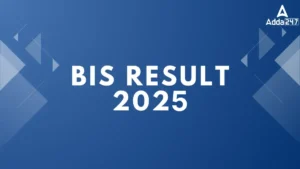Quantitative Aptitude Quiz For SBI PO/Clerk Prelims
Q1. Quantity I: Time taken by A to complete a work alone if A can complete a work in 5 more days than B while A does the same work in 9 more days than C. If A and B can complete the whole work in same time as time taken by C alone to do the whole work.
Quantity II: Time taken by 8 men and 14 women to reap 7/12 part of 360 hectares land by working 7 hrs per day if 6 men and 10 women can reap 5/12 part of the land in 15 days by working 6 hrs per day. It is also given that work of 2 men is equal to that of 3 women.
Q2. Quantity I: Difference between the speeds of P and Q if 2 places A and B are 60 km apart. P and Q start from A at same time & meet 1st time at a place 12 km from B & they reach A after immediate return from B. The speed of slower person is 48 km/hr.
Quantity II: Average speed of train if a distance of 600 km is to be covered in 2 parts. In 1st phase 120 km is travelled by train and rest by car and it took total of 8 hrs, but if 200 km is covered by train and rest by car it takes 20 min more.
Q3. Quantity 1: Original marked price of the watch. A shopkeeper gives a discount of 15% on selling price of a watch. If he gives a discount of 20%, he earns Rs 51 less as profit.
Quantity 2: No. of different ways in which the letters of the word ‘THERAPY’ can be arranged so that the vowels never come together.
Q4. A basket contains 5 white and 9 black balls. There is another basket which contains 7 white and 7 black balls. One ball is to be drawn from one of the two baskets. What is the probability of drawing a white ball?
Q5. Find the number of ways in which the letters of the word ARRANGE can be arranged such that both R do not come together.
Q6. A teacher wants to select a girl out of 6 and a boy out of 8 for the drawing competition. In how many ways can be select?
Place: G B
Selection: 6 8
Total ways = 6 × 8 = 48
Q7. There are 6 students to be seated around a circular table. In how many ways they can be seated if two particular persons are next to each other.
Considering these 2 persons as 1 pair
Total number of circular arrangements = 2! × 4! = 48
Q8. 3 men and 3 women are to sit at a round table. In how many different ways can they sit so that no 2 women sit together?
Now, 3 women are to sit so that no 2 women sit together.
They have to sit three places each between two men.
It can be done in 3P3 ways i.e., 3! = 3 × 2 × 1 = 6 ways.
Thus, required number of ways = 2 × 6 = 12
Q9. How many three digits number can be formed by using the digits 0, 2, 4, 6, 7 if repetition of digits is not allowed.
First place can be filled up by using only one of 4 digits (except 0, since 0 at the first place is meaning less).
Second place can be filled up by using only one of 4 digits (as one digit has been used at first place).
Third place can be filled up by using only one of 3 digits.
Thus,
Places: 0 0 0
Digit: 4 4 3
Total numbers = 4 × 4 × 3 = 48
Q10. If P(5, 2) = P(n, 2), find n.
Q11. Quantity 1: Length of rectangle. The area of the rectangle is equal to the area of a circle whose radius is 14 cm. Breadth of the rectangle is 22 cm.
Quantity 2: The original two digits number. If the digits of a two-digit number are interchanged, the number formed is greater than the original number by 45. Sum of the digits is 13.
Q12. Quantity 2: Cost of one pen. The cost of 8 pens and 4 pencils is Rs. 176 and the cost of 2 pens and 2 pencils is Rs. 48.
Quantity 1: Quantity of water added to mixture. The ratio of milk and water in mixture of 90 litre is 7 : 2. If some amount of mixture is replaced by water, then ratio of milk to water becomes 5 : 2.
Directions (13-15): What will come at the place of question mark (?) in the following number series.
Q13. ?, 40, 56, 97, 187, 358
Q14. 252, 252, 246, 270, 210, ?
Q15. 1186, 592, 294, 144, 68, ?






 GA Capsule for SBI Clerk Mains 2025, Dow...
GA Capsule for SBI Clerk Mains 2025, Dow...
 The Hindu Review October 2022: Download ...
The Hindu Review October 2022: Download ...
 BIS Result 2024-25 Out for ASO, JSA and ...
BIS Result 2024-25 Out for ASO, JSA and ...





